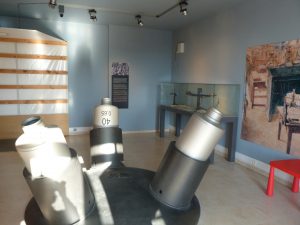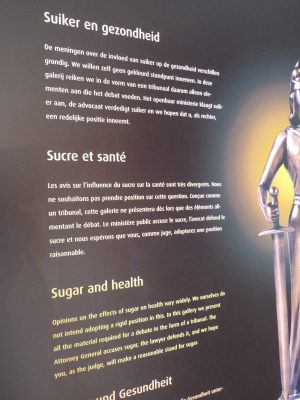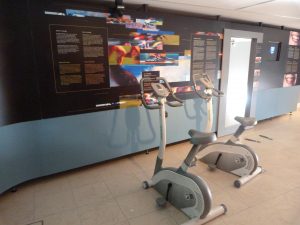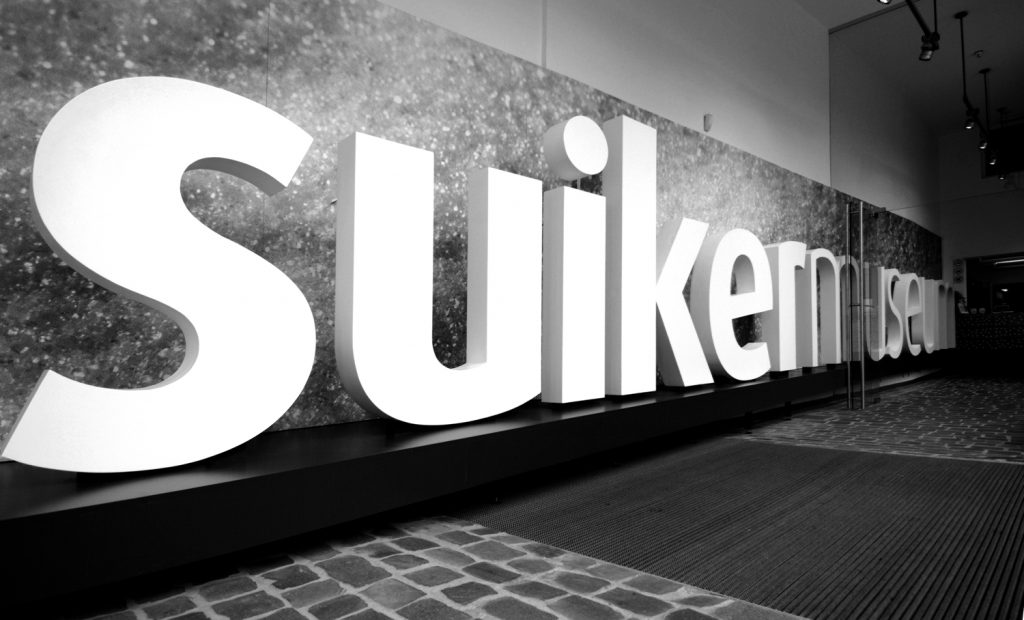A Sweet Landscape
Haspengouw is a region in Belgium known for its fertile soil, fruit orchards, and fields cultivated with wheat and sugar beet. It is arguably the country’s sweetest region. But if the region’s apple and pear orchards stand for healthy sweetness, then what does the sugar beet and its refined sugar stand for today? Sugar has become suspect since the late 1970s (Brody 1977), and the debate on sugar’s responsibility for chronic ailments such as diabetes and obesity continues today.[1] “Sugar is ‘addictive and the most dangerous drug of the times,’” says a recent Telegraph headline (Waterfield 2013).[2] For the municipality of Tienen, home of the biggest sugar refinery in Belgium, sugar is entwined with local history.[3] The factory brought industrial development to a nineteenth-century agrarian community, employment, local festivals with fireworks in the early twentieth century, and a rock festival today called Suikerrock (Sugar Rock). In 2002, the municipality opened a museum devoted to sugar. The relation of the factory to community life is evoked through different aspects: labor and harvesting techniques, sugar beet types, local political personalities, and historical events. Two exhibition rooms, however, cut the threads with community life and establish a different connection between sugar and humans. What’s going on here?
The Silent Laboratory
“Silence, dear visitor, only silence is appropriate here. We have entered the sanctuary of the sugar factory…the laboratory!”

Figure 1. The Macroscope.
Thus goes the voice of Professor Zucchero, our audioguide. It is interesting that the guide should be a scientist. He is a typical nutty professor who has privileged access to what sugar and sweetness are all about: a molecular connection. The eye-catcher in the room is a giant microscope: a macroscope. It certainly catches the visitor’s eye, and the play of scales transforms the visitor into an eye, turning his/her entire body into a witness of the molecular miracle sugar, the tango d’amore between glucose and fructose. The visitor is allowed to witness the spectacle in respectful silence. It is not entirely clear what sort of laboratory this is. The only things on display are different types of sugar, more or less refined. There are also some antique measuring devices. An explanation is provided about inulin as well, a sugar replacer with health benefits for your intestinal flora, developed by a spin-off of the sugar refinery in the 1990s. So it would seem that research is carried out here as well. But why are we asked to keep quiet in the laboratory? Isn’t this the place where instruments are adjusted and cursed upon, results discussed, and questions raised? Where are all the people? We see none of Zucherro’s colleagues at work, but only mute objects that relate to sugar in its different molecular and macroscopic forms.
The Room of Statements
“Opinions on the effects of sugar on health vary widely…. [W]e hope that you, as the judge, will make a reasonable stand for sugar.”

Figure 2. Sugar, Health, and Lady Justice.
The quote comes from an information board, the first of a series of boards that present scientific controversies on sugar as court cases. For each case, there is an imagined attorney general accusing sugar of being bad for one or other aspect of health. Next, the “sugar lawyer” responds by putting things in perspective. For the final verdict, the visitor’s speech is restored but in a very specific mode: that of a judge.
After being reconfigured to a witnessing organ of perception in the laboratory, the visitor is now rescaled to his normal everyday bodily proportions, and a shift is made from the ability to perceive to the competence to judge.[4] He is no longer in the secluded space of the lab but in what seems to be a public space, where all sorts of rumors, opinions, data, and eating habits abound. He is asked to balance and judge. A visual cue, however, sharing the room with the courtroom cases, is proposed to help the visitor with this difficult task. In a corner easily visible from all points of view, we see two real and full-sized exercise bicycles.

Figure 3. Exercise bikes in the museum.
How is it that exercise bicycles can be incorporated in a museum devoted to sugar? The simple answer is that the museum wants to convey the message that physical exercise is as important to health as the food we eat. Sugar itself cannot be responsible for obesity or diabetes. Things must be “put in perspective” if we want to judge the health risks of sugar properly. And for the visitor to judge properly, the museum uses interesting techniques of creating such contexts.
Judging Properly
Putting things in perspective or “in their context” is not about simply standing back and looking at the bigger picture. On the contrary, it is a technical gesture. Think about statistics, for example, or the choices a curator is confronted with when designing an exhibition (for example, see MacDonald 1996). These two exhibition rooms make a number of interesting moves in terms of scales and rhythm. First, there is the alternation between speaking and silence. This alternation occurs not only between spaces—the lab or public space—but also between concerns. The concern in the laboratory is the delicate process of sucrose production. Silencing the visitor means rescaling him to the size of a microscope and folding him up so that only his eye remains. Historians and philosophers of science argue that experimental apparatuses not only produce data or “matters of fact,” but also shut the mouths of critics (Stengers 1999).
The history of experimental science shows that knowledge and social order were intimately linked: who can talk when and where, and pose legitimate problems (Shapin and Schaffer 1985)? The sugar museum also has its way of distributing speech and silence, and framing legitimate problems. The lab of the sugar factory is more than a laboratory: it is a sanctuary. We can watch, but not meddle in sacred affairs: the play of scales and silence allow objects to articulate a behavioral code that connects knowledge and social order.
By contrast, in the second room, all sorts of opinions abound. Statements about the health effects of sugar are presented as legitimate concerns, albeit for private consideration. The visitor is invited to make a private and singularized judgement in public space. It is through the individual that things can be “put in perspective.” Next to the plays of silence and speech, and the play of scales between sugar molecules and the visitor’s body, the exercise bicycles are part of the museum’s technique to put things in perspective and to show how one must judge properly. Is sugar bad for my health? It depends. Do I exercise enough? By privatizing these questions, the museum bypasses the formulation of collective concerns about sugar and health. It is up to individuals/visitors to make up their own minds about health and healthy living (see MacDonald 1996).
Sugar and Social Life
The paradox of this story is that nearly all exhibition rooms celebrate sugar as a collective phenomenon. The visitor appreciates how sugar changed the face of a once-agrarian town and established a network of dispersed refineries, sugar beet cultivations, and a flux of beets and workers within a broader geographic region. Sugar has tied people together through local festivities, right up to today’s Sugar Rock festival, which is sponsored by the factory. But as soon as we approach sugar itself, strange things happen. Our social ties with sugar are cut. First of all, sugar becomes a matter of science: not just chemistry, but sacred chemistry that we should not meddle with. Second, when we touch upon the question of sugar’s health risks, our sweet molecule is not allowed to partake in social life either. When asked to make a judgement in front of an exercise bike, one may wonder what happened to all the human, technical, and political resources necessary to make sugar’s existence possible and virtually omnipresent in packaged food products.
To conclude, I must admit that I have grown fond of this particular sugar museum because it superbly succeeds in articulating a political difference between sugar as a sociotechnical accomplishment and sugar as an individual choice. The naturalness and logic of having production “on the one hand” and consumption “on the other” becomes wonderfully complicated and visible through the museum’s techniques of display.
